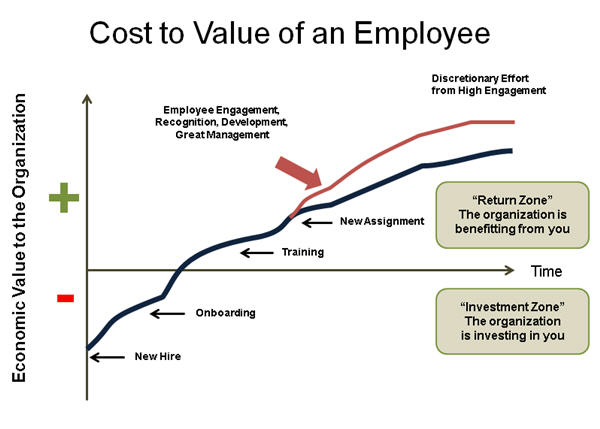Employee retention as a new business strategy focus
Since the financial crisis of 2008 in the United States and most recently the fiscal crisis in the European Union, companies have begun to give great importance to employee retention due to the large value involved in employee turnovers. A few years back, this was not as essential to the strategic planning of companies as it is today. Why exactly then has such an item become a priority on the agenda of most companies?
Cost of losing an employee
Studies show that the cost of losing an employee ranges from tens of thousands of dollars to almost twice the value of their annual salary. Overall, other factors compose this cost, such as:
- Cost of hiring a new person (advertising, interviewing, screening, hiring)
- Cost of onboarding a new person (training, management time)
- Lost productivity (a new person may take 1-2 years to reach the productivity of an existing person)
- Lost engagement (other employees who see high turnover disengage and lose productivity)
- Customer service and errors (new employees take longer and are often less adept at solving problems). In healthcare this may result in much higher error rates, illness, and other very expensive costs (which are not seen by HR)
- Training cost (over 2-3 years you likely invest 10-20% of an employee’s salary or more in training, that is gone)
- Cultural impact (whenever someone leaves others take time to ask “why?”).
The aspect of maintaining a solid company culture is reflected by employee retention. If a long time worker leaves, the company will suffer much more than a financial setback. The once intact engagement and motivation which that employee represented to others will be shaken.
Economic value of an employee over time
The following graph demonstrates how an employee develops in terms of value within an organization. The task of a Human Resources department is to facilitate the employee’s evolution upwards in this curve, as desmonstrated below.
Many tools are available to make employees accelerate this development some of which include training, seminars and specially coaching.
Developing your customized talent strategies for retention
The younger generation of employees has a different vision of what is the “perfect job” compared to that of previous generations. Even though some desires are similar, the younger generation has the characteristic of being much faster paced and wanting a more dynamic and free work environment. Therefore, some things should be considered when creating such strategy, tailored to suit your company’s needs:
- Financial compensation may not be as critical as you think. Remember that giving a higher pay will never compensate a poor work environment.
- Evaluate everyone within your organization. Get to know their strong and weak points. Coaching will then take care of working on what they need to get better at!
- Make sure you offer opportunities for career advancement. This factor is especially important for millennials, which typically seek a fast paced and ever-changing job.
- Offer a work environment which makes workers want to thrive and do more than they are required. Without an appropriate and stimulating environment, your employees will tend to become tired of the job they do.
Based on: Linkedin




